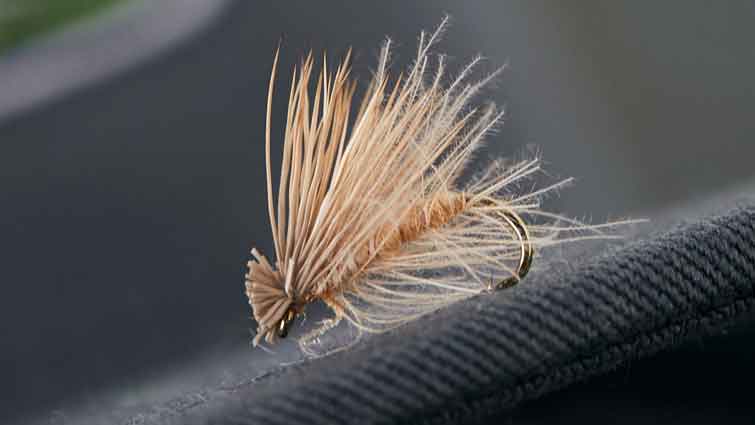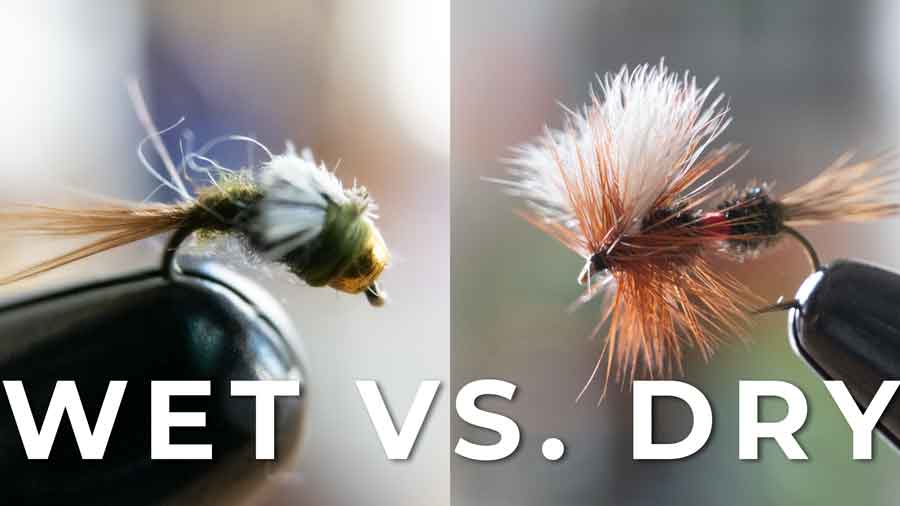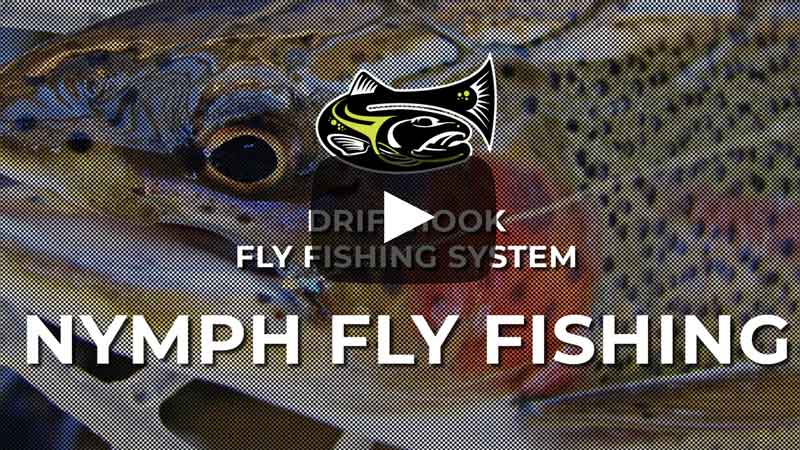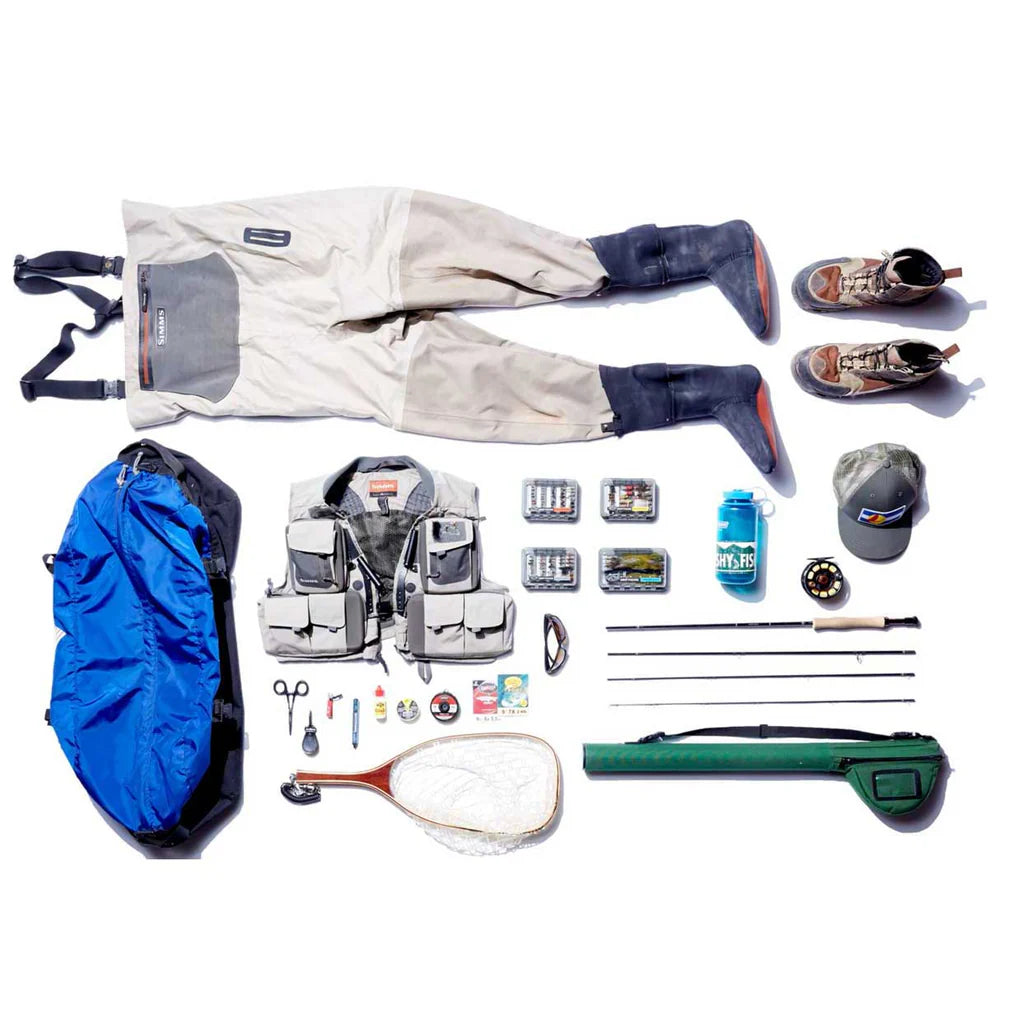At the heart of fly fishing lies the strategic selection between wet flies and dry flies, two fundamental types of artificial lures designed to mimic fish's natural prey. This choice is not merely about preference; it significantly influences your success on the water.

Wet flies are crafted to sink and imitate subsurface aquatic life forms like nymphs and larvae, while dry flies are designed to float, mimicking adult insects resting or struggling on the water's surface. Knowing when and how to use each type can enhance your fly fishing experience, making the difference between a fruitful day on the river and going home empty-handed.
This comprehensive guide delves into the critical distinctions between wet and dry flies, providing insights on when to use each type based on water conditions, fish behavior, and time of day. Additionally, we'll highlight specific examples from top-tier fly kits to equip you with practical knowledge for your next fishing trip.
Differences between wet and dry flies
The primary distinction between wet and dry flies is their behavior and appearance in the water. Understanding these differences can help anglers select the right fly for the situation.
Wet Flies

Wet flies are designed to imitate various subsurface aquatic life forms, such as nymphs, larvae, pupae, and even small fish. These flies are intended to sink below the water surface and move naturally with the currents, mimicking the behavior of real aquatic insects and organisms.
Construction and Materials:

Wet flies are typically tied using materials that absorb water, such as feathers, fur, and synthetic fibers. Many wet flies also feature weighted components like lead wire, bead heads, or brass cones to help them sink quickly and reach the desired depth. The materials used in wet flies are chosen to create lifelike movement underwater, which is crucial for attracting fish.
Types and Patterns:

Common types of wet flies include nymphs, emergers, streamers, and soft hackles. Each type serves a specific purpose:
- Nymphs: Imitate immature aquatic insects, a primary food source for many fish species.
- Emergers: Represent insects transitioning from their nymphal stage to adulthood, a vulnerable stage that fish often target.
- Streamers: Mimic small fish or other prey, appealing to predatory fish.
- Soft Hackles: Feature soft, flowing feathers that move enticingly in the water, resembling various aquatic creatures.
Wet Fly / Nymphing Fishing Techniques:
Fishing with wet flies involves various techniques to present the fly naturally. Some common methods include:
- Dead Drift: Allowing the fly to drift naturally with the current, imitating an insect carried by the water.
- Swinging: Casting the fly across the stream and letting it swing through the water is often effective for streamers.
- Stripping: Retrieving the fly in short, quick pulls to simulate the movement of small fish or fleeing insects.
Wet flies are designed to sink below the water surface. They imitate various underwater insects, larvae, and other aquatic life forms. Wet flies often have soft, flowing materials that create movement, mimicking the natural behavior of underwater prey.
Characteristics of wet flies:
- Made with feathers, fur, and synthetic fibers that absorb water.
- Often weighted with lead wire or beads to help them sink.
- Designed to imitate nymphs, larvae, and other subsurface insects.
Dry Flies

Dry flies are designed to float on the water's surface, imitating adult insects that have emerged from the water or terrestrial insects that have fallen in. These flies target fish feeding on or near the surface, providing a visual and exciting form of fly fishing.
Construction and Materials:

Dry flies are tied with buoyant materials to ensure they stay afloat. Common materials include hackle feathers, deer hair, foam, and synthetic fibers. The construction focuses on creating a realistic profile of adult insects while maintaining floatation.
Types and Patterns:
Dry fly patterns are diverse, catering to various insect hatches and terrestrial insects:

- Mayflies: Represent adult mayflies with patterns like the Adams or Blue Winged Olive.
- Caddisflies: Mimic adult caddisflies with popular patterns like the Elk Hair Caddis.
- Stonefiles: Mimic adult stoneflies with popular patterns like the Kaufmann Stimulator
- Terrestrials: Imitate land insects such as grasshoppers, ants, and beetles, which are useful during specific seasons.
Dry Fly Fishing Techniques:
Dry fly fishing emphasizes presentation and delicacy. Key techniques include:
- Drag-Free Drift: Ensuring the fly floats naturally without creating unnatural movements, achieved by mending the line or using a reach cast.
- Targeting Rises: Casting to specific spots where fish are seen rising to take insects from the surface.
- Sight Fishing: Spotting fish and presenting the fly in their feeding lane for a precise and enticing offering.
Dry flies mimic adult insects that have emerged from the water and are resting or struggling on the surface. Dry flies are typically made with buoyant materials that prevent them from sinking.
Characteristics of dry flies:
- They are constructed with materials like hackle feathers and foam to keep them afloat.
- Designed to imitate adult insects, such as mayflies, caddisflies, and terrestrial insects.
- Often, they have bushy or upright wings to enhance buoyancy and visibility.

When to use wet or dry flies
Choosing between wet and dry flies depends on various factors, including the time of day, water conditions, and the fish's behavior.
When to use wet flies
Wet flies are generally more effective in the following conditions:
- Subsurface activity: When fish are feeding below the surface, typically indicated by swirling rises without breaking the surface.
- Murky water: In conditions with low visibility, wet flies can be more easily detected by fish due to their movement and vibration.
- Early morning or late evening: Fish often feed below the surface during these times, making wet flies a good choice.
When to use dry flies
Dry flies are best suited for the following scenarios:
- Surface feeding: Fish visibly rise and break the surface to feed on emerging insects.
- Clearwater: In clear water, dry flies are more visible to fish, making them an effective choice.
- Midday fishing: Fish are more likely to feed on the surface during warmer parts of the day when insects are active.
Wet flies for fishing in water
To optimize your success with wet flies, consider using some highly effective nymphs from the Drifthook Guide Nymphs Fly Fishing Kit. Here are a few examples:
Prince Nymph

The Prince Nymph is a classic and versatile fly that imitates various aquatic insects. Its distinctive biot tails and peacock herl body make it an attractive target for fish.
Features:
- Weighted with a bead head for quick sinking.
- Effective in both fast and slow-moving water.
Hare's Ear Nymph

The Hare's Ear Nymph is another staple in any fly box. Its buggy appearance and natural colors make it a reliable choice for imitating a wide range of nymphs.
Features:
- Soft, fuzzy body mimics the texture of real insects.
- Gold ribbing adds flash and attracts fish.
Pheasant Tail Nymph

Many anglers use the pheasant tail nymph as their go-to fly. Its simple yet effective design resembles numerous aquatic insects.
Features:
- Thin, segmented body for a lifelike appearance.
- The tail and body are made from pheasant tail fibers for natural movement.
Dry flies for fishing on the surface
The Drifthook Dropper Rigs Fly Fishing Kit offers some excellent options when fishing with dry flies. Here are a few examples:
Elk Hair Caddis

The Elk Hair Caddis is a versatile dry fly that imitates adult caddisflies. Its buoyant elk hair wing makes it an excellent choice for rough water.
Features:
- High-floating and easy to see.
- Effective in both fast and slow-moving water.
Parachute Adams

The Parachute Adams is a highly visible and effective dry fly that mimics a variety of mayflies. Its parachute-style hackle allows it to sit low on the water's surface.
Features:
- White post for enhanced visibility.
- Versatile and effective in various conditions.
Stimulator

The Stimulator is a bushy, high-floating fly that can imitate both stoneflies and terrestrials. Its buoyant design makes it suitable for fast-moving water.
Features:
- Bright, attractive colors.
- Effective for attracting fish in turbulent water.

Benefits of wet and dry flies
Both wet and dry flies offer unique advantages, and understanding these benefits can help you make more informed decisions on the water.
Benefits of wet flies
- Versatility: Wet flies can imitate a wide range of subsurface insects, making them useful in various conditions.
- Effectiveness: Wet flies are often more effective when fish are not actively feeding on the surface, increasing your chances of a catch.
- Movement: The natural movement of wet flies can trigger strikes from fish that are not actively feeding.
Benefits of dry flies
- Visibility: Dry flies are easier to see, both for the angler and the fish, making them effective in clear water and surface feeding scenarios.
- Excitement: Watching a fish rise to take a dry fly is one of the most thrilling experiences in fly fishing.
- Precision: Dry flies allow for precise presentations and can be used to target specific fish spotted on the surface.

Whether you prefer the subtle art of fishing with wet flies or the visual excitement of dry fly fishing, understanding the differences between these two types of flies is essential for any angler. By selecting the right fly for the conditions and fish behavior, you can enhance your fly fishing experience and increase your chances of success. With high-quality options from kits like the Drifthook Guide Nymphs Fly Fishing Kit and the Drifthook Dropper Rigs Fly Fishing Kit, you'll be well-equipped for any fly fishing adventure.




![Absolute Guide to the Perdigon Nymph [Tie, Fish, Catch]](http://drifthook.com/cdn/shop/articles/GUIDE-TO-THE-PERDIGON-NYMPH.jpg?v=1716931683&width=800)

2 comments
BIG Fish Mike
Very informative, thanks!
Very informative, thanks!
Michael Gieringer
This a very HELPFUL Article and very nicely done. Thank you.
This a very HELPFUL Article and very nicely done. Thank you.